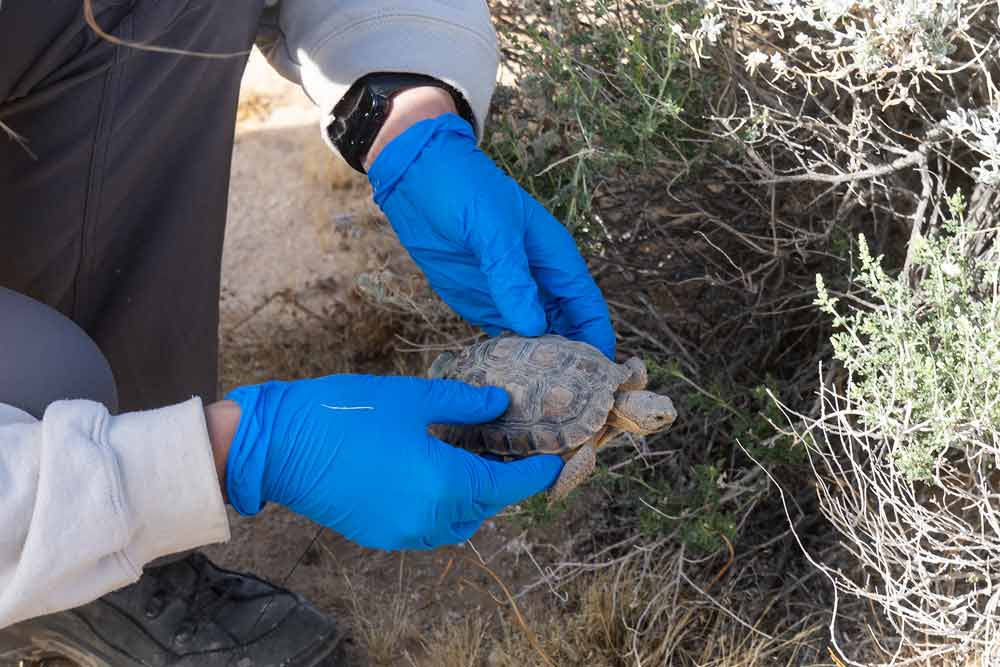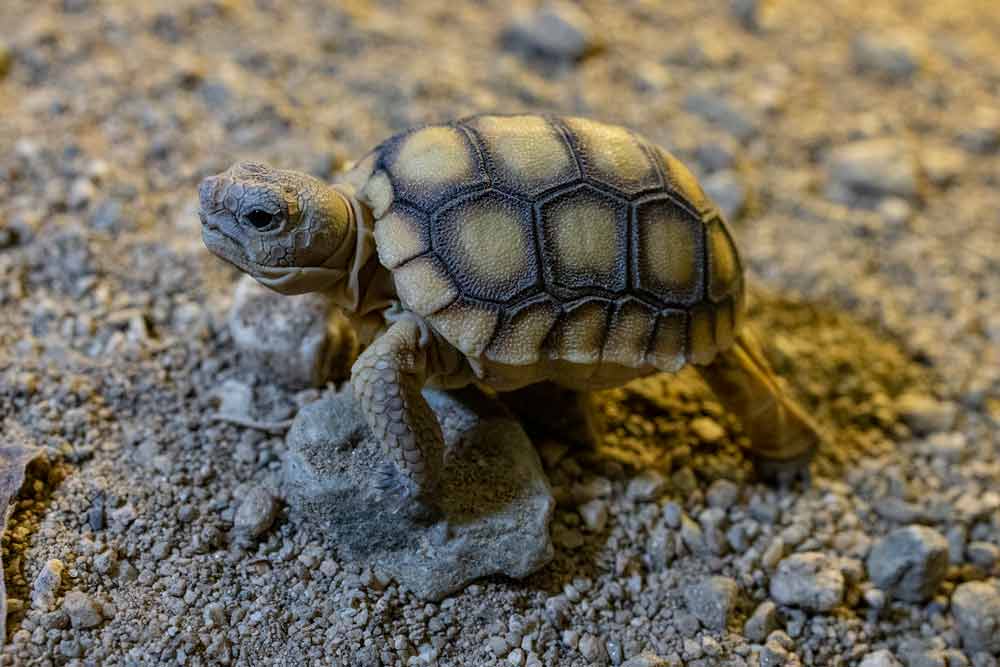“Mortality of juvenile desert tortoises is dramatic, often approaching 100% in areas where ravens are overpopulated due to humans providing them food via their open trash containers."
The San Diego Zoo Wildlife Alliance and The Living Desert Zoo and Gardens announced April 15 that 70 critically endangered Mojave desert tortoises (Gopherus agassizii) that are a part of a headstart program have successfully emerged from their winter burrows on Edwards Air Force Base in Southern California.
Working with the military at Edwards Air Force Base, the U.S. Fish and Wildlife Service, and the U.S. Geological Survey, the alliance used headstart techniques that are designed to help the tortoises survive in the wild. Headstarting in this case combined one to two years of indoor captive care at the Living Desert that enabled the tortoises to grow three to five times their size. This helps them ward off predation. After care from the staff at the Living Desert, they were released into their native habitat on the Edwards Air Force Base.
“We’ve worked so hard to get here, and we’ve been through so much together,” Melissa Merrick, Ph.D., associate director of recovery ecology at San Diego Zoo Wildlife Alliance said in a statement released to the media. “We’ve had to re-strategize, switch plans, react and adapt to so many emerging situations, and we’ve all done it successfully to get to this point. The second group of young headstart tortoises just arrived from The Living Desert and will spend the next six months with us before joining their predecessors in the wild. It’s an exciting time for the program.”
California’s Desert Tortoise Populations To Be Strengthened By Military Head Start Program
US Marines Control Raven Populations To Save California Desert Tortoises
California Desert Tortoise Granted Temporary Endangered Species Status
The team had to perform emergency excavation of the eggs more than a year ago due to a heat wave that would most likely killed the tortoises. The staff at the Living Desert cared for the tortoises a month early and during varying stages of hatching, the alliance said. A second emergency excavation of eggs occurred in September 2023 when predatory ants and fly larvae attacked the eggs and hatchlings as they emerged from their shells. It is speculated that Hurricane Hillary, a rare event in Southern California, brought wet and moist conditions that enabled these insects to proliferate rapidly.

Desert tortoise being released back in its native habitat at the Edwards Air Force Base. Photo by Ken Bohn, Staff Photographer, 2022 © San Diego Zoo Wildlife Alliance
“Our headstarting program is essential for maximizing the success of young tortoises as we release them into the wild,” said James Danoff-Burg, Ph.D., director of conservation at The Living Desert Zoo and Gardens. “Mortality of juvenile desert tortoises is dramatic, often approaching 100% in areas where ravens are overpopulated due to humans providing them food via their open trash containers. The benefits of headstarting are clear when in only six months we can get them to the approximate size of a two-and-a-half-year-old tortoise! Larger tortoises are much more resistant to raven and coyote predation than smaller ones, and our headstarting program ensures that not only normal juvenile mortality rates in the wild are reduced, so is predation. Headstarting makes reintroductions of desert tortoises more successful.”
About the Desert Tortoise
The California desert tortoise was granted temporary endangered species status by the California Fish and Game Commission in October of 2020. The tortoise ranges from the Mojave and Sonoran deserts in Southern California and can also be found in Arizona, Nevada, as well as in areas in Mexico. It grows to about 8 to 10 lbs. and eats mostly weeds and leafy weeds in the wild. The desert tortoise is a protected species and it is speculated that more desert tortoises can be found in captivity than in the wild.



